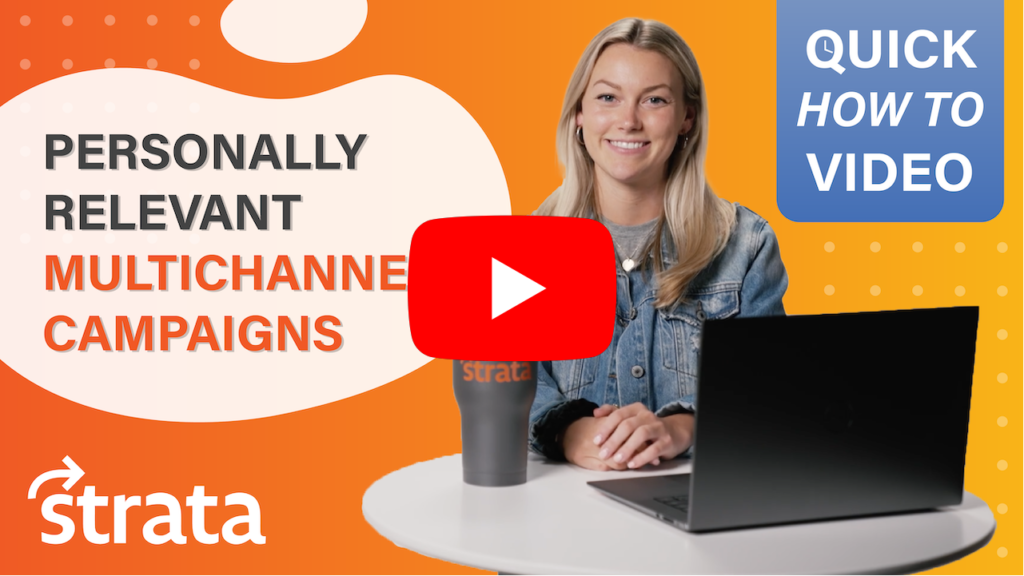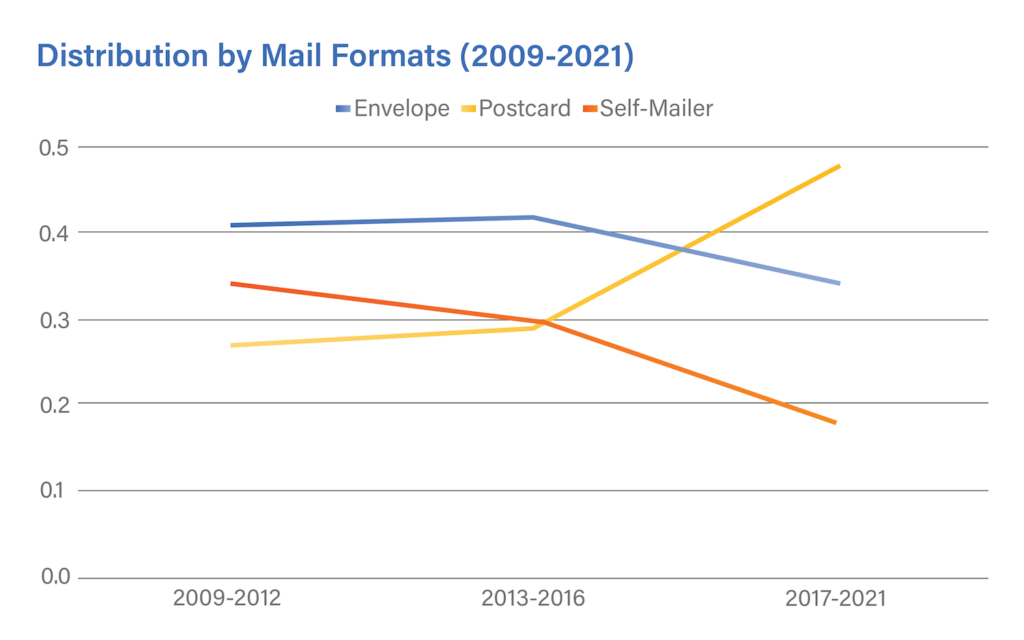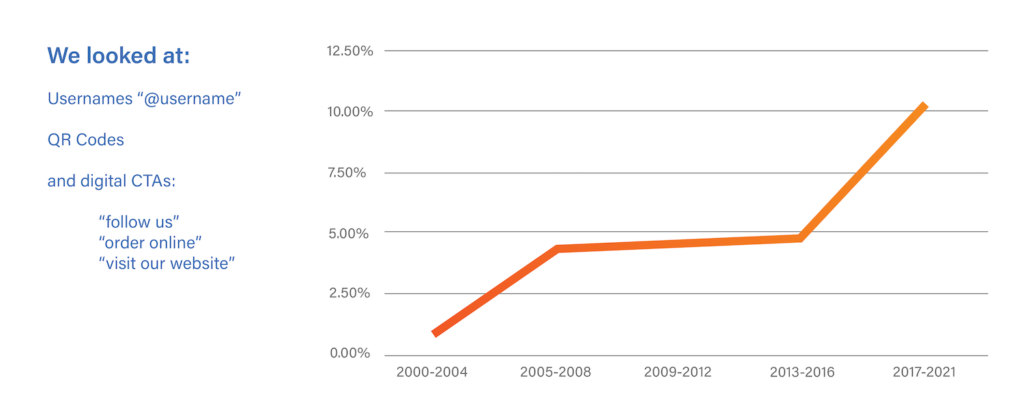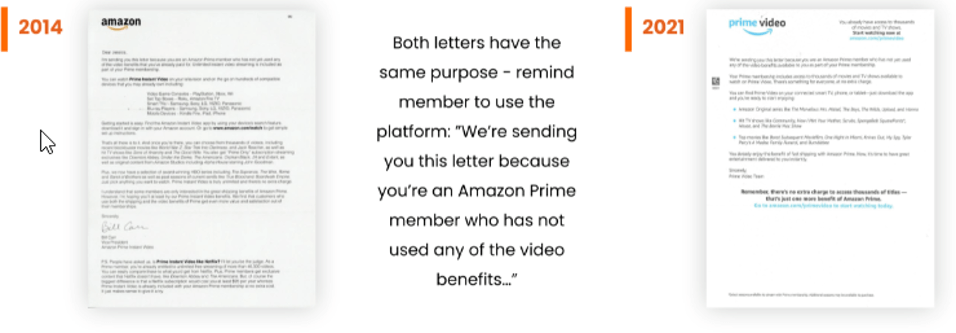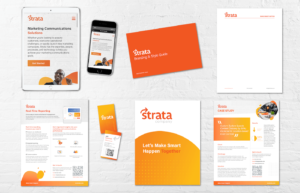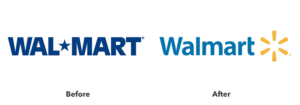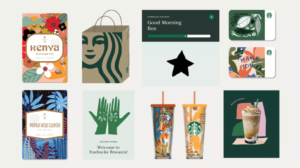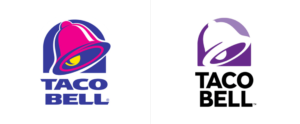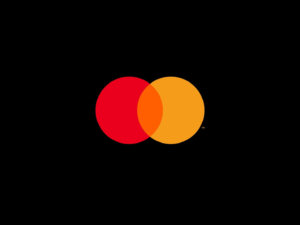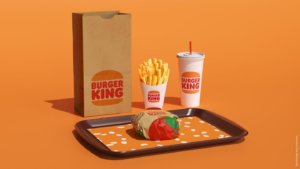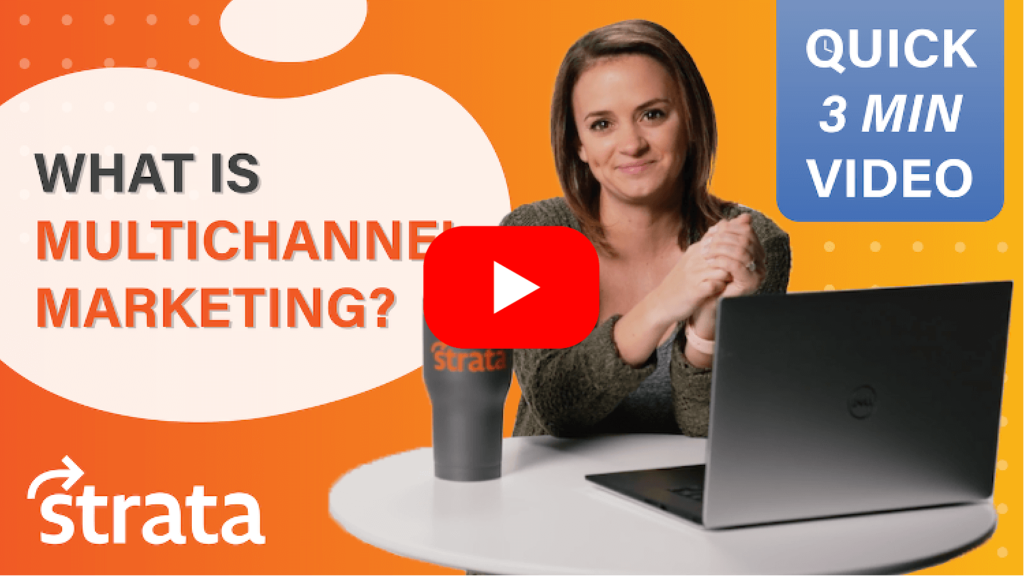Untrue & Debunked
With years of experience, we’d say we’re experts in direct mail marketing. But we’re not just the mail people. We provide highly impactful direct mail marketing that cuts through today’s digital noise to deliver a tactile experience and leave a lasting impression. That’s why we’re well versed in all of the misconceptions about direct mail floating around out there, and can tell you exactly why they’re untrue. Follow along as we debunk the 6 misconceptions of direct mail.
Misconception 1: Direct mail is past its heyday
Once in a while, we hear people speculate and assume that direct mail is past its peak – but just because direct mail has stood the test of time, doesn’t make it outdated. It’s been around for a while for a reason, and has evolved and changed over time – with the times. In fact, in a recent IAB survey, six out of ten marketers prefer direct mail over other offline channels and still include it in their direct marketing strategy today.
These days, direct mail breaks through the digital noise and is unique and different than other marketing tactics. It brings about nostalgia, as people enjoy the feeling of paper in their hands, similar to enjoying paperback books over kindles. Plus, for every 36 emails you receive (on average), you get 1 piece of mail in your mailbox. The possibilities are quite endless, with many exciting design opportunities and options. Really, direct mail is only boring and old if you make it that way.
Misconception 2: Compared to other tactics, direct mail doesn’t provide ROI
This one couldn’t be further from the truth. Don’t believe us? Here are just a few stats to back us up. The average lifespan of an email is 17 seconds, compared to direct mail’s average lifespan of 17 days. Up to 90% of direct mail gets opened, compared to only 20-30% of emails. Per USPS, 98% of people check their mail daily and Americans spend upwards of 30 minutes with their mail on a single occasion. Direct mail open rates can reach up to 42%. Recipients of direct mail also “purchase 28% more items and spend 28% more money than people who don’t get that same piece of direct mail.” Direct mail gets response rates 10 to 30 times higher than digital channels, according to the DMA (Direct Marketing Association).
Basically, direct mail usually does very well in terms of ROI, and it can (and should) be tracked – so make sure you’re getting the most out of it by making it trackable with the use of digital touchpoints.
Misconception 3: Direct mail marketing is expensive
When people think of print, they sometimes think of high-cost, but that’s not always the case. If you have a quality list and are getting the most out of each mailer you send, direct mail won’t seem all that expensive. What do we mean by a quality list? If you’re sending to strategic, particular contacts – not just any contacts, your ROI will be worth the price.
Additionally, print often gives you more for your money while other marketing practices alone may not (for example PPC, social media ads, email marketing platforms, and more). According to the stats, mail marketing is much more likely to be seen and paid attention to.
Misconception 4: Millennials and younger don’t like or pay attention to direct mail
Direct mail isn’t just effective for older audiences. Actually, 73% of American consumers (in general) say they prefer being contacted by brands via direct mail because they can read or review the information at their leisure. And, 41% of Americans of all ages look forward to checking their mail each day.
Millennials, specifically, like to feel important and seen, so the personalization opportunities of direct mail make for great millennial marketing. To add to this, many millennials and Gen-Z-ers have digital fatigue and find taking a “break” with print to be often enjoyable, and it “should be no surprise that those raised on the internet are best able to tune out online ads.” They also have shown to have a lot more trust in print resources than in digital.
Misconception 5: Direct mail works on its own and doesn’t integrate with other channels
These days, direct mail is actually an excellent touchpoint among many, especially when conducting a multichannel marketing campaign. And, we’d even say that combining tactics, even if it’s just two, is usually the way to go. In a recent study, a whapping 68% of marketing respondents saw that combining digital and direct mail increased visits to their websites.
So, how do you integrate physical with digital? By using a URL of a landing page or website, a PURL (personalized URL), BRC (business reply card), or a QR code. Any of these can be used to lead the viewer to a digital touchpoint. These can all also be used to measure attribution and better understand your target audience, and the emails and other information acquired from BRCs or online landing page forms can be used for email marketing, targeting customers with digital advertising, and sending further communication.
Misconception 6: Direct Mail = Junk Mail
Unlike junk mail, direct mail is focused, targeted, relevant, ROI-producing, and uses a quality send list. For more on why direct mail isn’t the same as junk mail, check out our blog, “Direct Mail vs. Junk Mail”, here. Strata can be a resource for direct mail with a surgically targeted list of prospects that are not only more likely to have a need for your project or service, but are also more likely to respond.
Now that it’s a bit clearer that direct mail is relevant, effective, and can be a huge part of the bigger picture of a marketing strategy, you may be interested in giving direct mail marketing or multichannel marketing a try. If so, give us a call.
Is it the Right Option for You?
In a recent blog, we went over what Every Door Direct Mail (EDDM) is, some of its positives and negatives, as well as some alternatives. Today, we’re diving a bit deeper into EDDM’s pros and cons so that, when you’re ready to launch your next direct mail campaign, you’re able to choose wisely.
What is EDDM Again?
Every Door Direct Mail, (better known as “EDDM”) is a blanketed mailing approach sent through USPS to potential customers near your business (aka – all of your “neighbors” nearby). You can use USPS’ provided mapping tool to select a geographic area, while viewing some demographic data based on census reports such as age-range, household size, and income. With this data in mind, you can choose what mail routes you’d like your piece delivered to – and, you guessed it, your mail gets delivered to every door. You can schedule this delivery whenever you’d like, within the parameters of the postal office.
With EDDM, you have the option of either creating the mailer design yourself, or working with a company (like Strata) to create a design that’s effective and professional. And – when using EDDM, you have two options, EDDM Retail and EDDM BMEU.
What’s EDDM Retail?
EDDM Retail is a good option for small businesses, restaurants, realtors, and local political campaigns. With this choice, you can create an account, send 200-5,000 pieces per day, per zip code, and simply drop your mailings off to the post office. You don’t need a permit with this option, and you can easily pay online or at the post office. The cost is currently $0.20 per piece.
What’s EDDM BMEU?
EDDM BMEU, on the other hand, is a good option for larger volume mailings, as there’s no volume limit and you may send to several different zip codes. As you can imagine, it’s slightly more involved than retail. You’ll need to make a Business Customer Gateway account, acquire a bulk mailing permit, and drop off your mailers to a BMEU – a large USPS mail processing center. The current cost for EDDM BMEU can be “as low as $0.168 per piece.”
The Pros of EDDM
Now that you know your EDDM options, we’ll go over the pros and cons. First – the pros. If your marketing budget is low and you’re looking for something that won’t put much of a dent in it, EDDM mailing can be a worthwhile choice. You can avoid high postage rates, generally, and postage discounts are available for most. Additionally, if your mailing is small and you’re not too concerned about a wide geographic area, you can again save on postage by opting for EDDM.
EDDM can work well for general awareness campaigns – such as showcasing a small business’ grand opening, letting people know you’re running for office, hosting a special event at a restaurant, introducing yourself as a realtor…the list goes on. If you want the general public to know about you, EDDM can help you do just that. Just make sure your business and/or brand is apparent by using quality branding and imagery, your logo(s), memorable colors and fonts, and other elements that people will take note of and will recognize if they see them again. If you’re not sure how to do this or what to include, give us a call.
The Cons of EDDM
Although EDDM is a good service that works for a lot of use-cases, it has its downfalls. With EDDM, you’re unable to really target a specified audience based on significant data, such as interests and hobbies, life changes, environment, age, income, and so on. Yes – you can find an area where many of the people meet some of these criteria, but with Every Door Direct Mail – it’s sent to exactly what it sounds like – every door. You don’t have the option to add people in or take people out if they’re in the selected demographic area and on the chosen mail routes. Therefore, you’re likely wasting paper, production, and money on people who have zero interest in your product, service, or event. You could be reaching out to people who fail to check their mail regularly, see your mailer and throw it out immediately, read it over and have no need or interest, or worse, are offended by your offering or service. What do we mean? Here are a few examples of what we liked to call “fail mail”:
- A BBQ restaurant flyer sent to a house of vegans
- A retirement home postcard sent to a couple in their twenties
- A daycare service mailer sent to someone single with no children
- A car dealership flyer sent to an eco-friendly bicyclist
Whether the “potential customer” doesn’t see it, throws it out, doesn’t want it, or is offended by it, the mailer was a waste of time, printing, and money.
On the other hand – maybe your mailer will actually interest most of your audience and you’re sending it to a large target area. Awesome! But – if your EDDM campaign is too large, you risk offsetting postage cost savings with extra production processing. Plus, paper costs right now are higher than normal due to the shortage, which could mean that printing and mailing to every door could cost you more than the response is worth.
Finally, EDDM does not provide the option to truly personalize your mailers. And, if you’ve read any of our other blogs, you know that personalization is a large part of direct mail success. In fact, a personalized CTA has been found to increase conversions by 78.5%. Without including a name, interest, favorite product, specialized offer, or personalized URL and QR code, your response rate is likely to suffer. If the mailer isn’t linked to anything else and doesn’t lead them anywhere personally specific, it’s not nearly as enticing or effective.
Next time you’re looking to send a mailer out to potential customers, fans, voters, guests, and so on, you may want to use EDDM (depending on your budget and needs), but as experts in the industry, we can say that there is often a more targeted strategy, like new mover marketing or multichannel marketing, that may work better. If you’re ready to get started on your next direct mail campaign, we’re here to help. Simply get in touch.
A Strata YouTube Channel Original
Creating a personally relevant multichannel campaign can be difficult without proper preparation and guidance. Luckily, in this blog, featuring our most recent YouTube video of our Multichannel Marketing series, we go over some marketing personalization statistics, how to create a personalized, cohesive, and seamlessly relevant journey across multiple channels, and ways to better know who your buyers are.
The key to starting is to understand who your audience is and their specific buyer journey. Once you collect this data, it’s time to personalize and make sure the content you’re putting in front of them is relevant.
Map Out Your Customer Journey
When creating the perfect multichannel campaign for your audience, take a look at who your buyers really are and then work backwards to figure out how they became a customer. What high-value acquisition channels did these customers use? Which customers have strong LTV (lifetime value)? Talk to your customer service team and your customers. Once you organize and map that out, you’ll have a much easier time figuring out where the problems are, and where objections are coming from. And finally, discover where customers dropped off in the funnel. Put all of this together, and you’ll have a clear look at the journey your customers take and how you can improve your connections with them.
Establish Your Data
When we say establish your data, we’re talking way more than first names and company names. While those are important – that’s not the personalization customers are looking for these days. You’ll want to start partnering with a company (or using software) that can help you gather info like real-time, on-site behavior, online and offline conversion history, geographic location, product affinities, and device activity. All of this will help you develop a strategy that’s consistent and relevant from one channel to the next.
Ultimately, there’s no one-size-fits-all personalized experience – that’s why customers crave it so much. To see what steps are next in establishing your personalized approach, click on the video below. You’ll hear our Marketing and Social Media Coordinator, Bridget, go through best practices. Or, if you’d like to discuss this concept with one of our multichannel experts, contact us today to get your next (or maybe even your first) multichannel campaign started.
From QR Codes to Concise Copy
Direct mail trends can be difficult to forecast, and even harder to use correctly and efficiently. However, you’re in luck, because as direct mail experts, we’re providing you with the top 10 direct mail trends – from QR Codes to concise copy – that have and continue to dominate 2021.
1. QR Codes
In the last few years, QR codes have really built a name for themselves. Not only because of their quick, digital nature, and the 2% postage cost break that comes with them, but because of their data-backed effectiveness. When a QR code is included in a way that makes sense- it provides a time-saving benefit to the customer while letting the company lead their customer exactly where they’d like them to go.
Although the year 2020 was detrimental for most industries and marketing tools, the QR code flourished. During a time where we didn’t want to physically touch anything, QR codes made up for physical marketing pieces like menus, signage, print ads, and flyers, leading customers from physical to digital – and quickly. The more QRs were seen, the more used to them we became (similar to our newfound familiarity with masks and hand sanitizer). And they’re still going strong in 2021.
Like we said, QRs lead customers to wherever a company would like them to go. They can provide helpful information, send the customer to a website, or even lead them to purchase.
2. Postcards on the Rise
Envelopes – they’re great and all, but let’s be honest, they add a few seconds (at least) to the time it takes to open (and read) direct mail. These days, it’s often better to send a postcard due to its more creative, eye-catching nature and faster access to information. Making it easier to read your call-to-action can often make customers more likely to respond to an offer or even visit a website or landing page for more information. Plus, they’re lower in cost – which means a better chance of higher ROI for your campaigns. As you can see below, postcards pushed past self-mailers and envelopes this year by quite a bit.
3. B2B Dimensional Mailers
These fun, three-dimensional, interactive mailers are the perfect way to stand out and cut through the clutter of everyday mail. “On the B2B side, dimensional mail is working well; because we all receive so many packages today, prospects want to open it and see what’s inside,” says Grant Johnson, Owner and CEO of Responsory. Although more costly and demanding in terms of postal handling, dimensional mail has the best B2B response rate at 8.51%. Check out our blog on the best secrets to a successful dimensional mailer campaign to get started on your own.
4. Better Segmentation with Data
“Accessing 1st and 3rd party data to further segment an audience will continue to play a huge role in a DM campaign’s success. If you’re able to align targeted messaging and great creative with those different segments, then that’s a recipe for increased response rates. Furthermore, surrounding that DM send with a similar message/offer through various digital channels will only add to that campaign’s success. Being able to hone in on delivery dates and putting an emphasis on speed to market are big contributors to making a direct mail/digital integration program thrive.”
– Mike Efstathios, Business Development at ICS Corporation
Data, data, data. It’s all everyone can talk about these days – and for good reason. Enriching your data qualifies your audience, and in turn, increases your ROI. And, if your marketing strategy is multi- or omnichannel, the customer experience becomes even more successful. While better segmenting your data may cause your audience to shrink, it will definitely cause your engagement to grow. Like we always say – it’s better to target the right people than all the people.
5. Increased Personalization
88% of marketers recently reported seeing better campaign metrics after using personalization in their advertising. More than ever before, the need for marketers to make human connections is extremely relevant, and some may even say necessary. The majority of our population feels they’ve lost personal connections and relationships due to the pandemic. Because of this, 2020-2021 has been the time to make up for lost connections by personalizing materials to bond with your audience and make them feel seen, heard, and human. Check out our blog on the best ways to get personal, here.
6. Higher Response Rates
Since the beginning of 2021, we’ve seen a rise in direct mail response rates. Why? More time at home means more time to go through – and even pay attention to, mail. And as the trend of working from home and staying at home has continued and even increased, response rates don’t seem to be dwindling anytime soon.
However, high response rates don’t just come from people staying put. They come from quality tracking, targeting, design, and audience awareness. For more tactics to increase response rates, visit this blog.
7. Interactive Direct Mail
In today’s world, we’re surrounded by technology. And with all of this technology, there’s no reason we shouldn’t be incorporating it into our direct mail efforts. 2021 brought new technology and an abundance of data that empowers companies when targeting audiences and crafting content. Next time you’re sending direct mail – think about how far you can go with it. Can it include a scratch-off? A game? A free kit or item? A contest? It’s pretty limitless.
8. Digital Prompts
Direct mail isn’t only a way to reach customers, but an excellent way to reinforce online efforts. Simply use social icons, QR codes, or other prompts to send customers to social platforms, websites, menus, forms, landing pages – you name it! Marketers are definitely catching on to this direct mail tactic, as usage of digital prompts has doubled in the last four years. Take a look at the chart below to see how the use of digital interactions has increased.
9. Concise Copy
It’s one thing to know what you want to say, but knowing how to say it is the real key to direct mail effectiveness. Throughout 2021, we’re seeing shorter sentences, smaller paragraphs, fewer bullet points, and obvious CTAs. Your audience’s attention span is only so long, so catching the ears and eyes right away is crucial.
Below is a great example of how Amazon has practiced this and changed their copy to be more concise and clearer. Even at just a quick glance, the message is less overwhelming and more approachable.
Need some help with your direct mail copy? We’ve got a blog for you on ways to write action-inspiring content.
10. Investing in Direct Mail Tools
Although it’s not always top of mind, the right tools are one of the most important components of great direct mail. If you haven’t looked into or invested in marketing and data tools, you should be, because they can take your direct mail from general and stale to effective and exciting, and in turn, save you time and money. Instead of targeting the wrong contacts or using the wrong design elements, the right tools will ensure your mailer looks great and is sent to people who will actually open and engage with it.
Consider changing your format, ink, paper, or finish. Update your branding, content, or calls to action. Or, try technology like USPS Informed Delivery to reach consumers in a modern way.
So, there you have it! 10 effective direct mail trends that took off this year. If you’re interested in learning more about enhancing your direct mail, feel free to contact the experts at Strata. We’re happy to get you started with some great direct marketing materials.
A Look at Some of Our Favorite Customer-Focused Campaigns
Although we could write several blogs about all the great marketing campaigns that inspire and motivate us to be the best marketers possible and make the most effective material – in this blog, we’re looking at a few that we really admire because of how relatable and real they are. We’ll be breaking them down, thinking through what made them so successful, and in turn – helping you brainstorm your next campaign. Follow along as we dive into these customer-centric campaign leaders.
Apple’s #ShotoniPhone Campaign

No matter where you’re located – you’ve likely seen this one around town. On billboards, buses, signs, or online. iPhone and Apple’s popularity is pretty known, but what we didn’t know when the iPhone first became popular was that it would eventually completely replace the digital camera. And that’s what this campaign shows; that you can take photos with your iPhone that are as beautiful as a camera that would cost you thousands. That’s great and all, but that alone would not convince people of today. So, why’s this campaign so successful? It gets real people involved. It’s relatable. The photos are not only from real Apple customers – but include their names. If someone wanted to, they could look up the name of the person in the bottom corner associated with taking the photo and learn more about who that person is. The best part? Not all of these people are photographers, showing that anyone could use the iPhone to take great photos. This tactic is pretty genius and builds trust – as no one would really care if it was simply a generic photo that easily could have been taken on a Canon. “According to various studies, over half (51%) of Americans trust user-generated content more than other information on a company website and claim that it influences what they buy and where they buy it from.”
Coors Light’s #CouldUseABeer Campaign
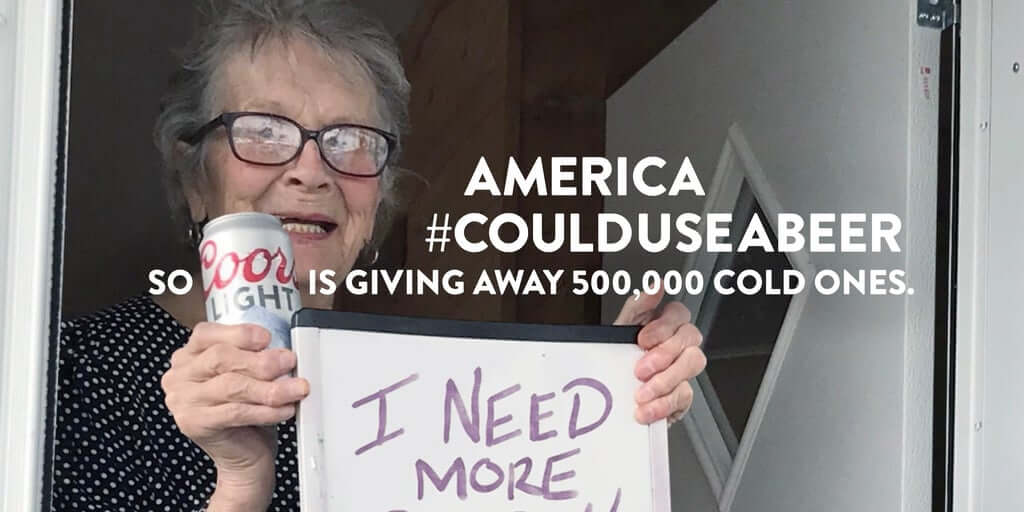
Another campaign that spoke to the general public and got them involved during a difficult time? Coors Light’s #CouldUseABeer. After a photo of a quarantined, 93-year-old woman asking for a beer went viral, Coors Light engaged with its audience by offering free six packs to anyone who was tweeted about (who – you guessed it, could use a beer). This tactic of giving away free items may seem pretty crazy, but it can go a long way. Although Coors Light gave away over 500,000 beers, their name was tweeted about again and again, which led them to trend, and boosted their reputation in a time of need.
American Apparel’s Direct Email Marketing
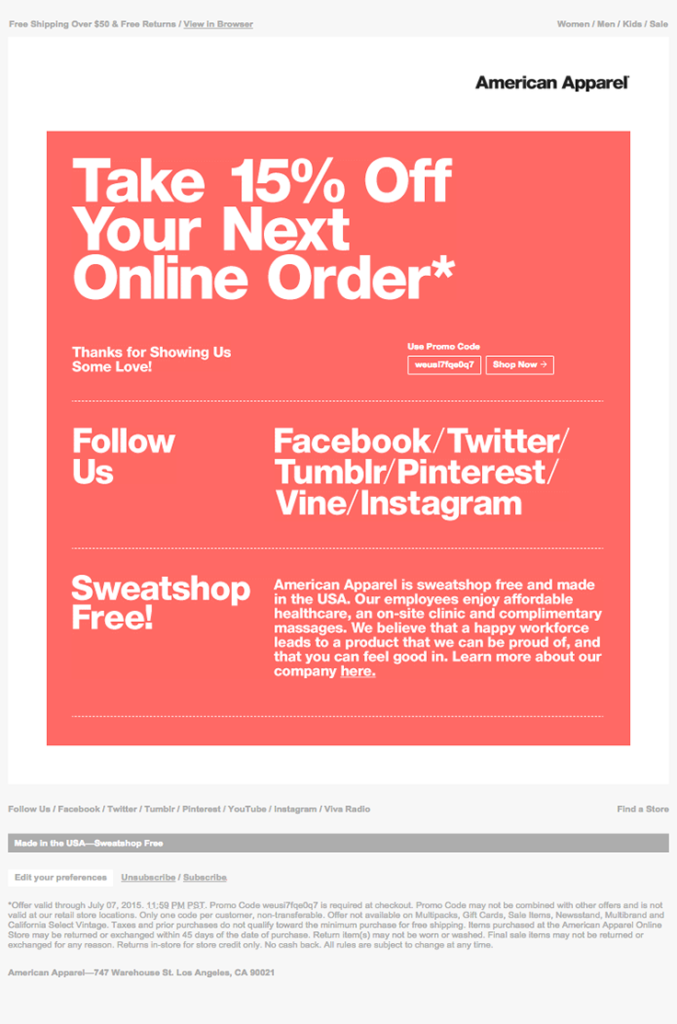
Known for being trendy and modern, American Apparel is no stranger to effective, up-to-date, customer-centric marketing. We’re specifically impressed with their to-the-point email marketing. No frills, no fluff – just what the customer wants (sales, discounts, and freebies). American Apparel always ensures that there’s no guesswork for their customers. Simple and sleek, their emails are call-to-action forward without being in-your-face.
Mercedes’ “Like You” Campaign

How do you relate a high-end brand to a broader audience of customers? Relate it to them, literally. Mercedes’ “Like You” campaign did just that. Called to several different types of audiences with phrases like, “Detail-obsessed, like you”, “Groundbreaking, like you”, “Original, like you” and “Curious, like you”. And not only was this phrasing compelling, but consistent. For the span of the campaign, potential customers could find the phrasing on billboards, signs, online ads, and on tv. The consistency was key, in that potential customers began to associate themselves with the brand and possibly even buy a Mercedes.
Airbnb’s Use of User Generated Content

Similar to Apple’s tactic, Airbnb uses the photos, videos, and feedback of its customers in its campaigns to promote beautifully classic or uniquely interesting places to stay. “Millennials spend 30% of their media time (5 hours/day) engaged with user-generated content (UGC). Coincidently, this is the same generation that drives Airbnb’s success in the sharing economy.” Airbnb keeps things personal and personalized by including its audience, which facilitates a happy and loyal community of customers.
Coca Cola’s Share a Coke Multichannel Campaign
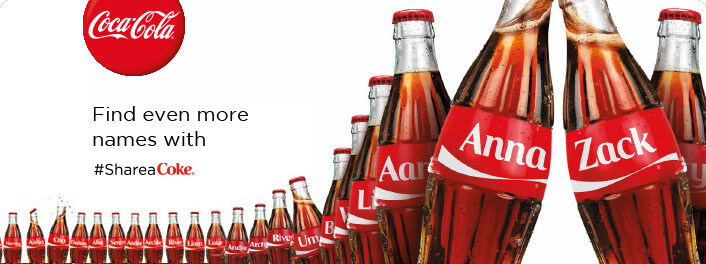
We all know this one. There’s nothing more personal than having your own name on a Coke bottle – which is exactly what Coca Cola did for its ongoing “Share a Coke” campaign. Whether you customize your bottle or simply find your name in store, you’re likely to share it with the world through text, email, on social, you name it (no pun intended)! And its rollout in 2011 sure worked in building brand awareness, boosting sales, and creating positive brand recognition, as “Young adult consumption increased significantly during the campaign, up by 7%, making 2011 the most successful summer ever. The campaign earned a total of 18,300,000-plus media impressions.”
Spotify’s #2020Wrapped Campaign
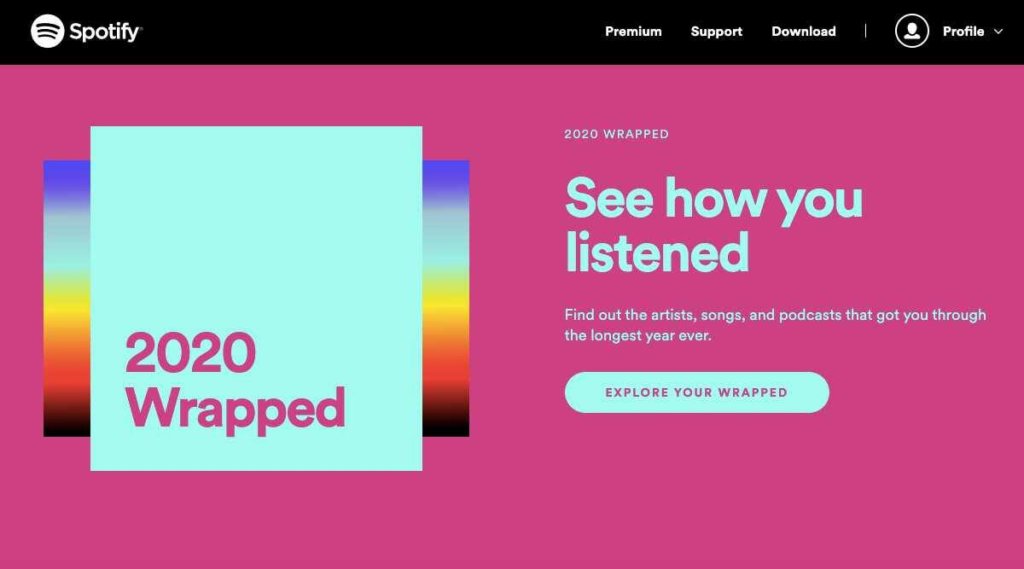
If you have any form of social media, you’ll likely remember this campaign flooding your feed, and maybe you even took part in it. At the end of 2020, Spotify allowed its customers to see their year of music with “2020 Wrapped”, which compiled their listening into a lovely array of photos and stats. Viewers loved seeing their personal data compiled into a nicely packaged marketing piece – and loved sharing their interests with others. Smart on Spotify’s end, because it not only gave them free marketing, but boosted their recognition.
So, What Have We Learned?
If you haven’t noticed, most of these campaigns share one key factor; relatability. How can you use relatability to create effective campaigns, too? Know your audience. Before even starting to brainstorm a campaign, make sure you’re fully aware of who, where, and when you’re targeting. And when you do start your campaign based off your findings, use that data and understanding to carefully craft consistent messaging that includes clear call-to-actions and personalized, catered content. Use hashtags, giveaways, QR codes, PURLs, BRCs, and more to engage with your audience and include them in your campaign. And, when and if appropriate, sprinkle in some humor.
Interested in making an impactful, relatable campaign that can help boost your company’s marketing efforts? Not sure exactly where to start? Look no further. Strata’s here to help. Contact us today to get the brainstorming started.
With the Top 10 (Other) Best Rebrands & Refreshes
We can’t believe we’re already celebrating the one-year anniversary of Strata’s brand refresh. It’s been quite a year (to say the least). But we can honestly say that, with all of the struggles of 2020-2021, our brand refresh wasn’t one of them. If it did anything (and it did a lot), it definitely brought us together, made us more confident, and better showcased our personality, vision, team, and solutions. The brand refresh catapulted Strata into 2020, helping us solidify our style and services, attract new talent, and stay inspired.
When we decided we needed a new look – we had to pick between a full rebrand or a refresh. For us, the answer was easy. A complete rebrand would have required scrapping our identity and starting from scratch, where a refresh allowed us to keep our main identity and strategy intact. Our brand was strong with our current clients and we had a great reputation as problem solvers and solutions experts – so a refresh was perfect for what we needed to do.
With any rebrand or brand refresh – “consistency across all channels is key”. Over the past year, we’ve ensured that all our materials – from website to print, are on-brand.
Since we now have a bit of rebrand and refresh experience under our belts, we wanted to take a look at the top 10 best company rebrands and refreshes (in our eyes) besides Strata’s, of course.
Our Top 10
Dropbox
Dropbox refreshed its brand in 2017, and it was nothing short of successful. The company worked with design studio “Collins” to create a cleaner and simpler logo and lots of illustrative elements to better connect with their primarily creative and collaborative audience.
Airbnb
Airbnb did a full rebrand in 2014 with Design Studio, sending their team of designers to 13 cities to truly immerse themselves in Airbnb’s offerings, community, and mission. It resulted in a beautiful brand that differentiated Airbnb from its similar competitors. The CEO of Airbnb even stated, “When I look at this brand, I suddenly realized everything I’ve been trying to say, now we have a way to express it.”
Walmart
“There are very few companies in the world that managed to change the public perception of their brand as successfully as Walmart did.” In 2008, Walmart made this change to get away from their “always low prices” slogan that often-made customers feel like it was also “always low quality”. They also wanted to steer clear of the questionable corporate practices they were called out for in the early 2000s. So, Walmart did a complete 360 with a whole new brand from redesigned stores to a new look and personality.
Southwest
We love this brand refresh because it reminds us of ours. Without a complete overhaul, Southwest changed its look and logo to showcase their humanity and heart – literally.
Guinness
Good old Guinness. Many love it, others don’t, but it always holds true that Guinness makes us feel like we’re back in the olden days, sipping a brew in the pub. Instead of following the crowd of flat logo designs, Guinness actually added detail to its logo in 2016, working “with real harp makers to breathe new life into the legendary logo” that “could be built into an actual harp that would work properly and be in tune.”
Starbucks
Starbucks is loved by many – and dare we say it – is mainly successful because of its brand (although we do love it a latte). They’ve made slight changes over time to the brand, always increasing their user experience and recognizability with a “distinctive color scheme, typography, and illustrations.”
Taco Bell
You may not have really noticed Taco Bell’s brand refresh until now – but its cleaner, simpler look has helped it stay relevant among its many fast food and taco chain competitors. Along with this well-done refresh, Taco Bell has been named “one of the healthiest fast-food chains in America,” so, they’re doing quite well.
Mastercard
In 2016, Mastercard conducted a refresh with Pentagram to emphasize “simplicity, connectivity and seamlessness.” It’s simple and sleek look of just the famous two overlapping circles is surprising, but logic-based. “The change follows research by Mastercard that found that more than three quarters of people asked were able to identify the brand from the two interlocking circles alone.
Burger King
For the first time in 20 years, Burger King conducted a brand refresh with a new logo, uniforms, and packaging – and we love its nostalgic look. The new logo is actually very close to BK’s logo design from the 70s-90s. The creative agency on the project wanted to “pay homage to the brand’s heritage with a refined design that’s confident, simple and fun.”
Intel
Last but not least, Intel’s 2020 refresh caught our eye because of its subtle hints to past logos. Again, it refers back to their past while being currently relevant. “This new logo includes elements of both (past logos), but in a much more subtle, minimalist way.”
To take a more in-depth look back at our brand refresh, visit our original refresh blog, here. If you’re looking to make your branding and marketing communications more effective and efficient, give Strata a call.
Get to Know These Tracking Treats
Within the world of marketing, there’s a lot of buzz around the topic of cookies and what the future holds for tracking website visitors and generating personalized advertisements. While the topic’s relevant, not many people are completely informed on what cookies are and the impact they have on our ability to create better customer experiences. In this blog, we’re going over what cookies are, the differences between first-party and third-party cookies, and the future of online tracking.
So, What Are “Cookies”?
Although many of us are “foodies” here at Strata, and could talk about a good dessert all day, this blog isn’t about Oreo or Chips Ahoy. We’re talking about web “cookies” – text files put into a user’s browser page while they’re visiting a website. Cookies are known by several names – web cookie, internet cookie, browser cookie, or HTTP cookie, but they’re all the same, and in general, they track and log browsing activity against identification data such as IP addresses. Why is this information useful? Primarily, cookies help save information about a user in order to personalize their website experience and the advertisements they’re shown.
While cookies have enjoyed a childhood free of regulation, their “free-willy” time is coming to an end with recent regulatory initiatives driven by an increase in public concern over internet privacy. The first major change came when General Data Protection Regulation (GDPR) made consent mandatory in order to track visitors on a website. To give you a feel for the impact of GDPR – about 11% of users click to “accept all cookies”, 76% of users ignore the banner completely, 12% close the cookie banner, and 0.5% of users actually open up cookie settings, read through terms and agreements, and sometimes make adjustments. These numbers are misleading, however – what GDPR essentially did was force the user to choose between viewing the desired content and accepting cookies OR (with exceptions) leaving the site entirely. So, while it looked good – almost all of the visitors in the stats above were still being tracked.
At this point, you might be thinking that we need to eradicate the cookie – if so, hold that thought. Cookies almost always make your experience on the web better – they’re your friend, not your enemy. To solve privacy concerns – which is the intent of all privacy-centric regulation – we’ll need to jump down a level. There are two major types of cookies – First-Party and Third-Party. Both contain the same pieces of data and technically can conduct the same actions, but they’re created differently, used differently, and have different benefits for distinctive situations. Let’s get into each one.
First-Party Cookies
Simply put, first party cookie technology is usually installed or authorized by a website’s owner and only tracks that user across that specific website. First-party cookies are set on the publisher’s server or on the JavaScript loaded to the website. Their defining technical feature is that, for the most part, only the domain that created the cookie can access it, thus they are seen as less invasive and are more welcomed by users.
These cookies allow website owners to collect analytical data, remember individual user settings or content (remembering what’s in a user’s shopping cart, their language preferences, or their username and password), and perform useful functions to provide better user experience. That last part is important – first-party cookies primary purpose is to deliver more relevant, user-friendly experiences to individuals. If you’d like to see the difference they make, just clear your browser cache and visit some of your favorite websites.
Third-Party Cookies
Contrasting first-party cookies, third-party cookies are not created by the domain of the website the user’s currently visiting, and therefore, can often seem intrusive and un-welcomed. This type of cookie is placed by another site, such as an advertiser or social media platform like ad.doubleclick.net – and is separate from the home domain. These cookies are usually used for online advertising purposes, and are added through a script, code, or tag to track a user across several websites. Enabling these cookies can help users see relevant discounts and catered advertisements, but can also possibly involve them in a breach of privacy. For this reason, third-party cookies are blocked by many browsers, and are currently being chastised as unethical.
Phase Out of Third-Party Cookies
In February of 2020, Google announced its phase out of third-party cookies by 2022. When this occurs, it will cause 56% of web browsers (the percentage that use Google Chrome) to block their use automatically. As stated by Google, their reasoning for forcing this phase out is to increase security and protect the user. You have to wonder, however – are ethics the driving principle here, or is this a strategic move to further corner the digital advertising market?
All-in-all, this change won’t make as much of a difference as you’d think, as a 2017 study showed that 64% of tracking cookies were already being blocked as users surfed the web. Those at Google seem to think that third-party cookies will not be replaced by another resource due to increasing privacy concerns, but they’ll continue to “support first-party relationships on our ad platforms for partners, in which they have direct connections with their own customers.”
What’s Next for Cookies?
No matter what the circumstances with third-party cookies, first-party cookies are definitely here to stay. If configured correctly, they’ll continue to function within most browsers – even if those browsers block third-party cookies. So – fear not – first-party cookies will provide marketers hindsight and insight on your website visitors for the foreseeable future – even if you might now be forced to use Google to reach them.
Now that you know a bit more about cookies, you may be motivated to improve and optimize your next digital marketing campaign. If so, contact us today.
A Strata YouTube Channel Original
Throughout your workday, you might hear the term “Multichannel Marketing” being thrown around casually, and not have the slightest clue of what it’s referring to. That’s okay! We understand that it can sound like an intimidating subject. While up to 95% of marketers say they understand the importance of multichannel marketing for targeting, only 73% say they hjave a multichannel strategy set in place. At its core, Multichannel Marketing is a simple concept that can help your company’s overall marketing campaigns and execution excel. Read along as we walk you through this falsely intimidating marketing concept.
What is Multichannel Marketing?
In a nutshell, multichannel marketing is a strategy that uses a combination of indirect and direct communication channels. With these channels, you’re able to reach all of your clients, prospects, and customers with a multifaceted campaign that can do wonders for your company. Multichannel campaigns are all about distributing the right content to the right people at the right time. Whether it’s by direct mail, digital ads, social, websites, or brick and mortar stores, multichannel marketing can be anywhere and everywhere so that your customers can take action and respond to the channel of their choice. You basically open a window of endless communication possibilities, and let your customers respond on their own terms. There’s no forced communication, because the advertising experience is controlled by the pace of the customer.
98% of Americans switch between multiple devices in one day. If that statistic isn’t enough to make you believe in multichannel marketing’s power, then we don’t know what is. Traditional marketing tactics work, but multichannel marketing is unique because it meets customers where they are along their journey instead of at one single spot. For this reason, multichannel marketing is never a “one size fits all” approach. It requires marketing readiness on multiple channels, especially since 86% of shoppers regularly channel-hop across a minimum of two mediums.
Ready to Learn More?
If we’ve piqued your interest and you’re ready to enhance your multichannel marketing knowledge, check out our YouTube channel or click the video below. Our Marketing Manager, Caitlin, will give you a quick three-minute explanation on this ever-popular topic, or if you’d like to discuss this concept with one of our multichannel experts, contact us today to get your next (or maybe your first) multichannel campaign started.


